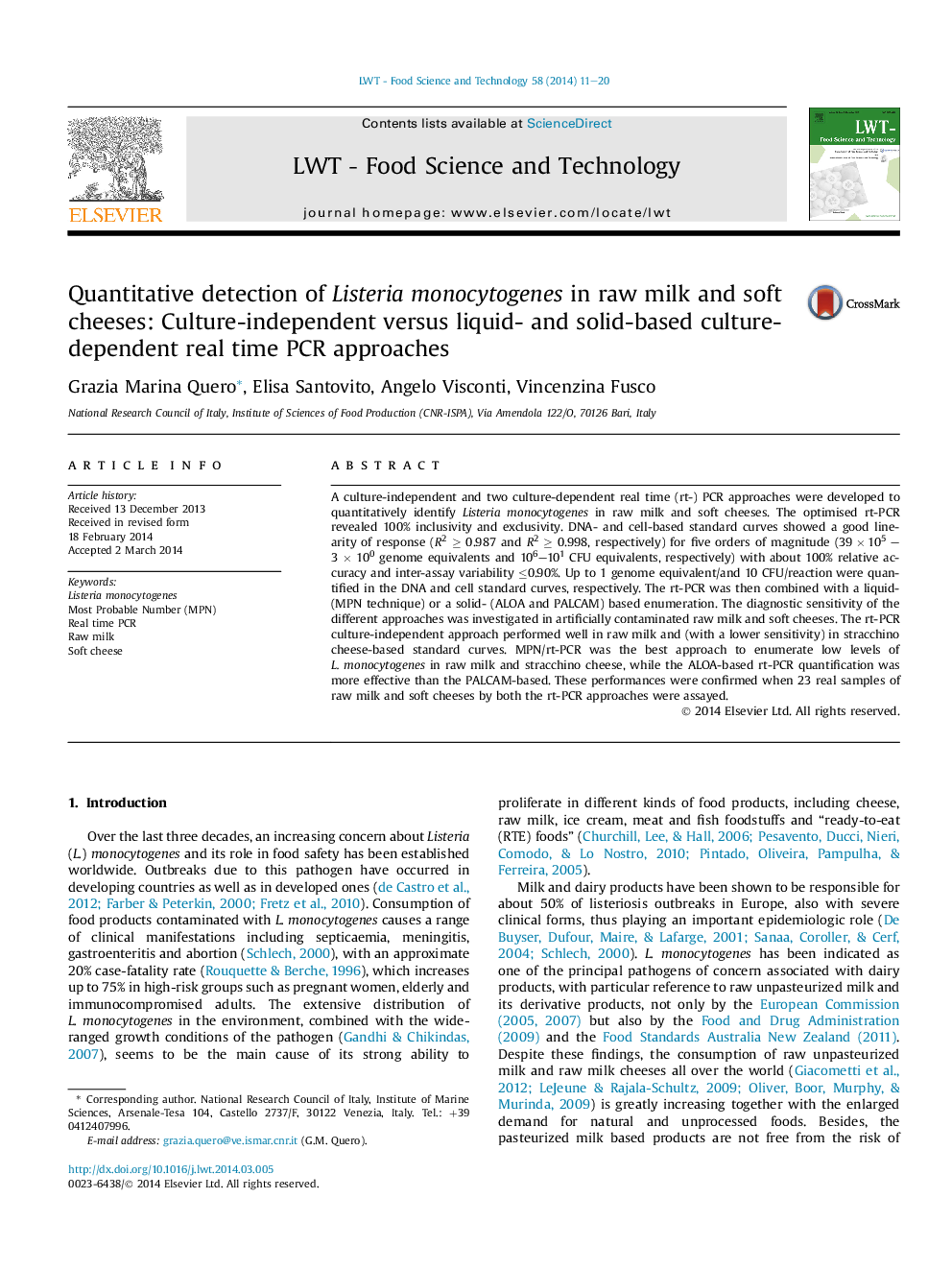| Article ID | Journal | Published Year | Pages | File Type |
|---|---|---|---|---|
| 6404019 | LWT - Food Science and Technology | 2014 | 10 Pages |
â¢A TaqMan rt-PCR assay targeting the Listeria monocytogenes hlyA gene was developed.â¢It proved to be quick and reliable to screen L. monocytogenes isolates.â¢Culture-independent rt-PCR sensitivity in raw milk was higher than in soft cheeses.â¢Culture dependent rt-PCR approaches were more sensitive than the culture independent.â¢Among all the approaches tested the MPN/rt-PCR resulted to be the most sensitive.
A culture-independent and two culture-dependent real time (rt-) PCR approaches were developed to quantitatively identify Listeria monocytogenes in raw milk and soft cheeses. The optimised rt-PCR revealed 100% inclusivity and exclusivity. DNA- and cell-based standard curves showed a good linearity of response (R2 â¥Â 0.987 and R2 â¥Â 0.998, respectively) for five orders of magnitude (39 Ã 105 - 3 Ã 100 genome equivalents and 106-101 CFU equivalents, respectively) with about 100% relative accuracy and inter-assay variability â¤0.90%. Up to 1 genome equivalent/and 10 CFU/reaction were quantified in the DNA and cell standard curves, respectively. The rt-PCR was then combined with a liquid- (MPN technique) or a solid- (ALOA and PALCAM) based enumeration. The diagnostic sensitivity of the different approaches was investigated in artificially contaminated raw milk and soft cheeses. The rt-PCR culture-independent approach performed well in raw milk and (with a lower sensitivity) in stracchino cheese-based standard curves. MPN/rt-PCR was the best approach to enumerate low levels of L. monocytogenes in raw milk and stracchino cheese, while the ALOA-based rt-PCR quantification was more effective than the PALCAM-based. These performances were confirmed when 23 real samples of raw milk and soft cheeses by both the rt-PCR approaches were assayed.
